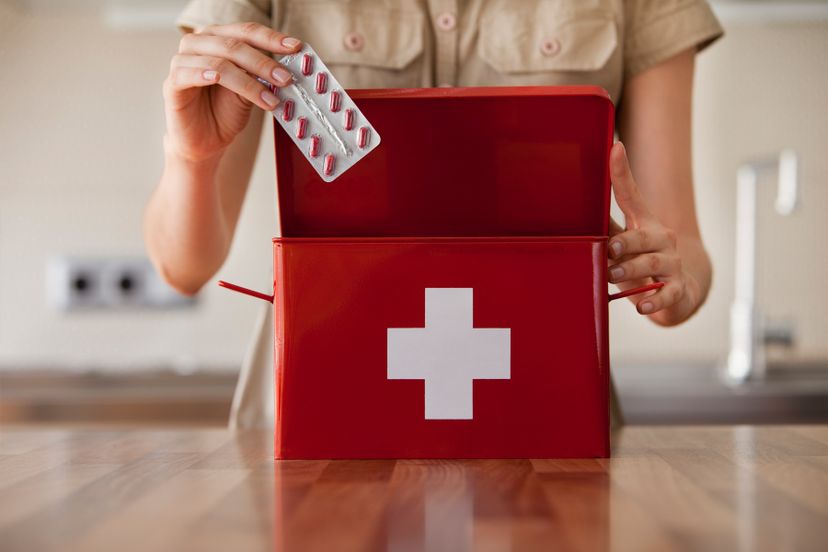
About This Quiz
Quick -- do you know how to perform CPR? Help someone who has just fainted? Get an insect out of a kid's ear? No? Well, read on. When you're done with this quiz, you'll feel a lot more confident in emergency first-aid situations.Potential heart attack victims can take aspirin to reduce blood clotting.
Putting both hands on your throat isn't the only way to signal that you're choking, of course, but it's the best way to make sure you get speedy help.
You should seek medical help if you have a fever of 103 F or higher -- or if you've had a fever for more than three days.
Advertisement
Milk will do the trick, as will saliva or a warm saltwater solution.
When you're performing CPR, you do 30 chest compressions and two breaths.
You should rinse your eyes out for at least 20 minutes, either standing in the shower or with your head under a faucet.
Advertisement
It's better to do something than nothing at all in this situation. If you don't know CPR, you can try chest compressions -- about 100 a minute -- until help arrives.
Airway, breathing, circulation. The first step in CPR is checking the victim's airway. If not, you begin rescue breathing, and then chest compressions to restore circulation.
Taking ibuprofen will ease your pain and help stop swelling.
Advertisement
If the person is breathing, putting him on his back and raising his feet about a foot will help restore bloodflow to the brain.
In 'five and five,' rescuers give five back blows followed by five abdominal thrusts (otherwise known as the Heimlich maneuver).
Sounds scary, but you can perform the Heimlich on yourself. Make a fist and place it above your bellybutton, wrap your other hand around it, then use a chair or countertop to press your hands upward and inward.
Advertisement
The black widow and the brown recluse are both dangerous -- but it's the brown recluse bite that produces the blister and ulcer.
All of these are helpful except petroleum jelly, which will impede healing.
If diarrhea is caused by food-borne bacteria, taking Pepto Bismol or Imodium will just keep the bacteria from exiting your system.
Advertisement
A slow stream of olive oil, mineral oil and baby oil could do the trick to float the insect out of the ear canal.
When the core temperature of your major organs drops down to 95 degrees or lower, it is called hypothermia.
Hypothermia victims should be warmed from the center of the body, and never with direct heat, like from a heat lamp. And, of course, you should always give them nonalcoholic drinks.
Advertisement
Raising your arm would direct the venom to your heart, so you'd want to lower the arm and stay as still as possible.